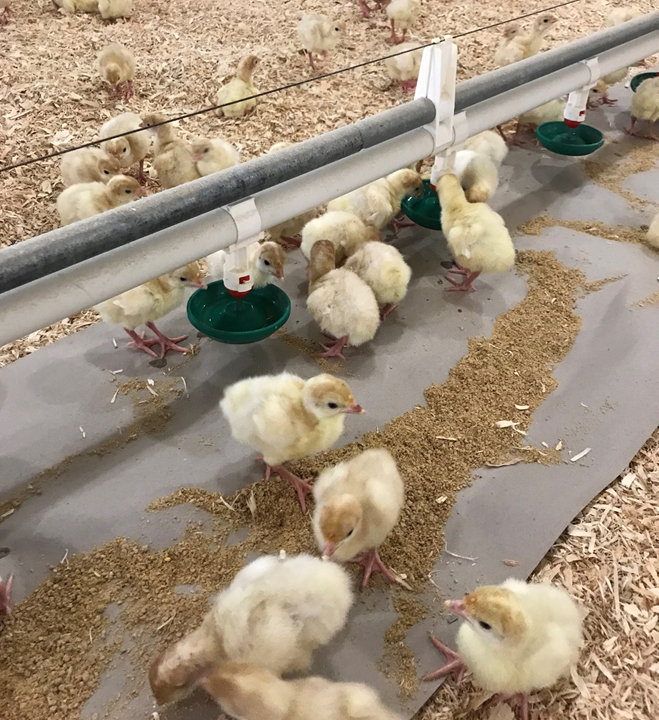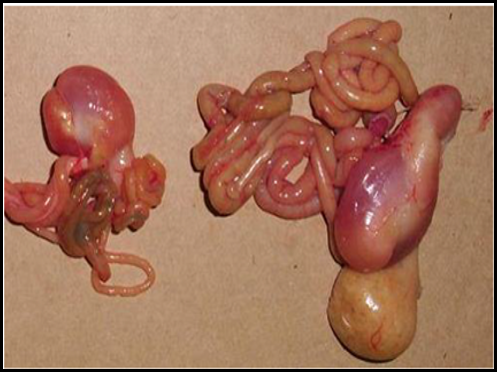
Published on Sept. 5, 2024
Essential Tips for Brooding: Feed and Water in the First 72 Hours
Right after placement, it is crucial to get your poults to start eating and drinking right away. Why? Their future health and development depend upon it.
The greatest opportunity for growth happens within these initial days and weeks. Seize this critical point in brooding with a few tips for making feed and water easily accessible while checking crop fill.
Why does early feed and water matter for poult development?
Newly hatched poults have limited energy reserves. While they absorb nutrients from the yolk sac before hatching, these reserves quickly deplete within the first 24-48 hours of life. Immediate access to food and water replenishes their energy and provides the necessary fuel for growth and activity.
We also know that a poult’s immune system begins to develop when they eat and drink. If poults fast at an early stage, this affects intestinal tract development and releases corticosteroid, which delays immune system development. Without a strong immune system, birds are much more susceptible to health challenges throughout the rest of their life. Also, a well-developed digestive system ensures that poults can efficiently process feed, leading to better growth performance and overall health.

Easy access to feed and water can also reduce flipper issues. Compacted crops can be the result of the birds finding feed but not water. This results in birds tipping over due to too much feed with no moisture.
Setting Up
Feeder and drinker height should allow the poults to have easy access. The table below gives some general guidelines on how many feeders and drinkers are needed by flock size.
| Age | Number of birds per bell drinker | Number of birds per nipple drinker | Number of birds per feeder |
|---|---|---|---|
| 0-6 weeks | 90-110 | 30-40 | 50-70 |
Before placement, review the height of your feeders and drinkers. Drinkers should be low enough that poults are looking down at the water line (see example below).

We highly recommend the use of paper under the drinkers with a fresh dusting of feed over the paper. Feeder paper means the poults don't need to travel far to start accessing both feed and water. When top dressing the feed paper, the poults are attracted to fresh feed and crinkling of the paper. We recommend using about 30 lbs (13.5 kg) of feed and spread it along 75 ft (23 m) of paper. Putting too much feed in piles does not have the same effect as adding more feed several times per day.

Another helpful tool is to spread hydration products that have been proven to enhance poult starts. There are a variety of different products on the market that come in power or pellet form.
After Placement
Once the poults are placed, pay close attention to their activity. They should be spread out, active, exploring their environment. As the poults eat and drink, be sure to refresh the feed paper every 4-6 hours for the first 2 days.
Checking Crops
After 24 hours, check the crop fill of a few poults from different areas of the barn. Gently feel the poult's crop using your thumb and forefinger. The crop should feel soft and rounded. You can tell that the poult has found feed but not water if the crop feels hard and compacted, similar to a very small golf ball. It is important to have the water below eye level to start to make sure poults can access easily. If you notice compacted crops, you can place the poults in a hospital pen to allow access to feed and water.

If possible, you want to feel that 100% of the poults have a full crop after Day 3. Day 4-5 is known as the starve out period when the poult's yolk sac has been completely depleted. If they have not found feed and water after this point, they will begin to fast, negatively affecting their immune system and gut health.
Starting turkey poults on the right foot with immediate access to food and water is essential for their health and growth. By prioritizing early feeding and hydration, you set the stage for healthy, efficient flocks that perform well and contribute to the overall success of your farm.



